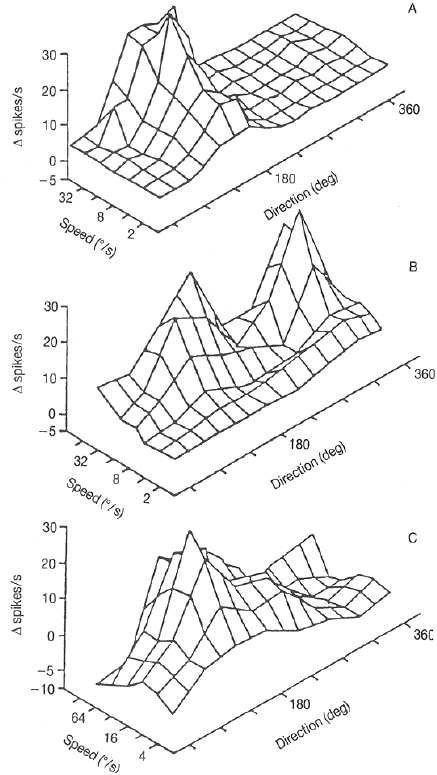Most of the visual information received by retina is relayed by LGN
to the primary visual area V1, where various aspects of the visual information
are processed and then forwarded to many extrastriate areas for further more
specialized processing. As a preprocessing stage, V1 is composed of several
layers of different response selectivity. Specifically, it has been found
that V1 cells respond selectively to: orientation, direction of motion, speed
of motion, spatial frequency, temporal frequency, wavelength, luminance,
binocular disparity. However, not all V1 cells are selective to these
parameters. For example, in layer 4B, which is on the Magnocellular pathway
projecting directly to the MT area, about two-thirds cells are highly
direction selective, while cells in layer 4C are not. On the other hand, the
cells in layer 4B are not sensitive to colors (so are the MT cells receiving
input from 4B in V1), while the cells in layer 4C![]() on the Parvocellular
pathway are.
on the Parvocellular
pathway are.
This is the direction tuning of a V1 cell:
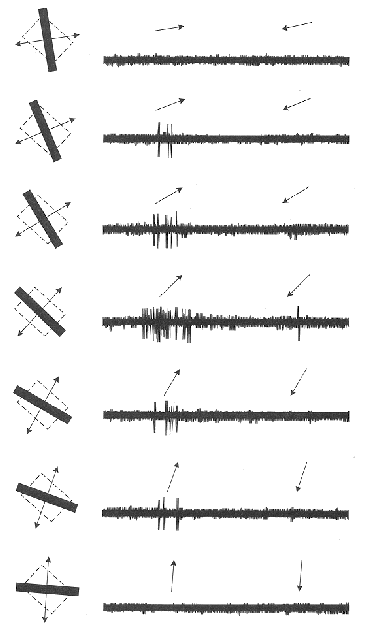
Almost all MT cells respond to visual motion, which can be described by its velocity, a vector with both direction and speed. This is the direction tuning of an MT cell (Snowden et al 1992):
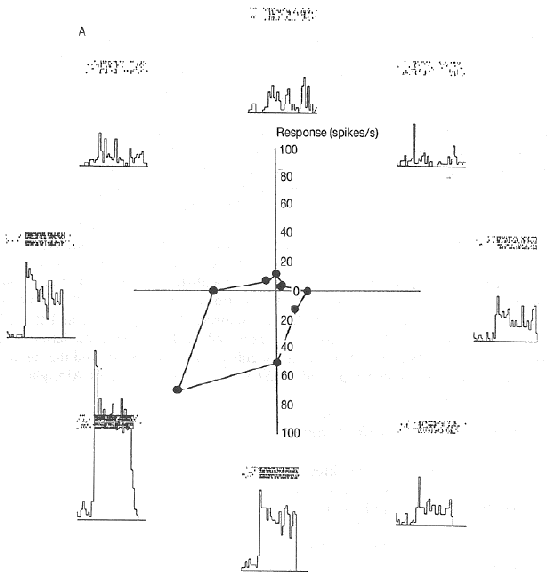
The tuning curve fits well with a Gaussian curve (Snowden et al 1992):
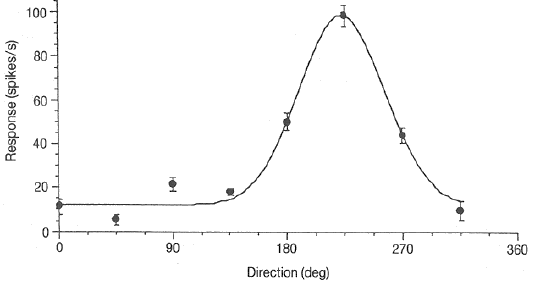
The MT cells are selective to different motion speed as well as direction (Rodman and Albright 1987):
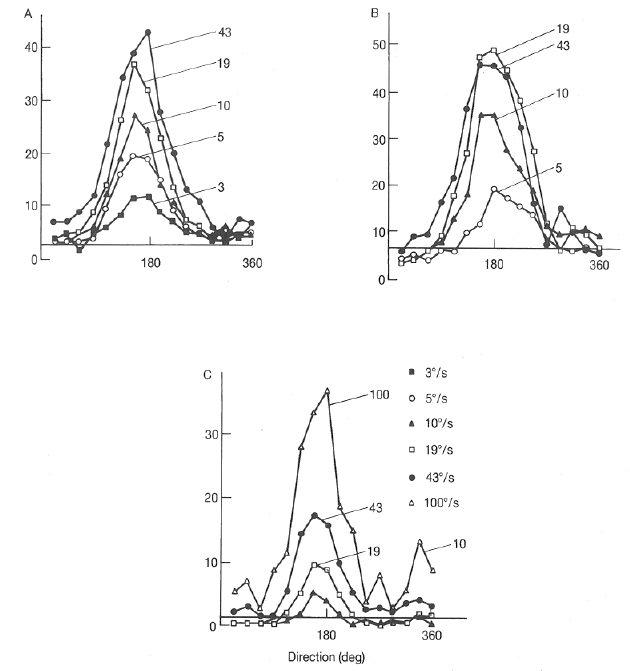
The 2D plot of the velocity (speed and direction) tuning of 3 MT cells (Rodman and Albright 1987):
